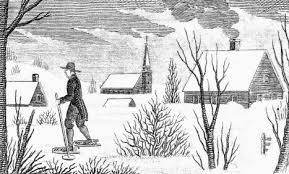‘The Land of Bone and Stone’
The Valley of Stones lies in a secluded valley near the quaint little village of Little Bredy.
It is part the South Dorset Ridgeway. an ancient trackway which runs along the ridge of high land.
A prehistoric ceremonial landscape which has been used for thousands of years and is believed to be a place to celebrate life and death, hence it's name ‘The Land of Bone and Stone.'
Link to the video of our visit
https://youtu.be/nhw31yRwql0
Archaeologists have dated flint tools found at nearby Bincombe Hill to 500,000 years ago; they were made by a nomadic people who had followed herds of wild animals north when there was still a land bridge between the Britain and Europe.
At first glance this site is fairly insignificant when compared to the larger henges of Stonehenge or Avebury although just as important in archeological terms. A durable rock, it was used in the construction of Stonehenge, the Avebury stone circle , and closer to home the Hell Stone.
This is a Neolithic Dolmen with the roof still intact, built on a ley line its entrance is aligned with the midwinter solstice.
The Grey Mare and her Colts, also to be found on the Ridgeway is the remains of Neolithic chambered long barrow. Its entrance also aligns the winter solstice sunrise and the sunset of the summer solstice.
The valley floor is strewn with boulders, washed down from the surrounding valley sides during the ice age and are the post glacial remains of cenozoic silcrete that once covered much of southern England.
This particular sarsen boulder train is one of the best British examples and is the same conglomerate stone that ‘The Nine Stones’, a prehistoric circle near Dorchester is constructed.
This particular stone circle is featured in the paranormal mystery The Doll
https://www.amazon.co.uk/dp/B0843QVJFG
This is the experts theory of how the valley of stones came to be but local legend tells otherwise... that the stones were deposited there during a throwing contest by local giants.
The giants, during a particularly violent altercation, instead of coming to blows decided that they would settle the disagreement by having a throwing competition. The winner would be the giant who could throw the most, the farthest. They each scooped up a handful of boulders from the hillside and took turns to hurl them as far as they could down the valley. The grassland soon became littered with hundreds of boulders as they continued for days until they finally, exhausted, gave up.
Which giant was declared the winner nobody knows but the result was the line of sarsen stones leading up the valley floor, which sounds a much more interesting explanation...
Of course this doesn’t explain the stone cicle set in the middle of the sarsen stones!
Millie, feeling the mystical vibes....
Mabel on the other hand is just hungry....
Or the stone circle could have been created by the famous white witch that lived in a tumble down cottage on the Ridgeway.
Maybe she has something to do with it, who knows...local legend has it that she was the local healer and midwife to the area. During phases of the moon she would transform herself into a white hare and was often seen running across the surrounding hills.
The locals had come to avoid her when she assumed this form as tales were told around the fire in the winter of some huntsman who were foolish enough to try and hunt the hare, not knowing it was the witch. They set their dogs to chasing it across the grassland of the hills. The hounds finally caught up with the hare and set up on it, the men soon followed and set to, trying to beat the animal to death. Somehow,maybe using her magical powers she escaped and although seriously wounded made her way back to her cottage. Here she collapsed on the cold floor and lay there close to death as the men pounded after her. They burst into the cottage and saw with horror that it was the witch whom they had attacked, terrified of reprisals they ran for their life except for one young man who stayed to help the old woman. He lifted her into her bed and tended her wounds, making a healing potion under her direction and waited until she had recovered before leaving.
The hunters of Little Bredy learnt their lesson and never hunted hares again...It is said that sometimes the white hare can still be seen running across the ancient grasslands.
It's an interesting place to visit but I would suggest you do it in conjunction with another of the mentioned sites.






































